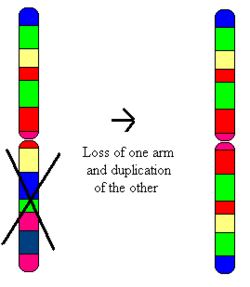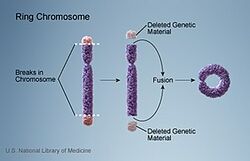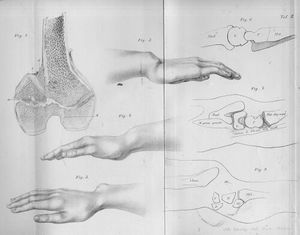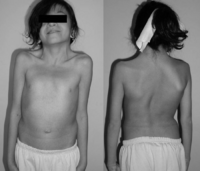Turner Syndrome: Difference between revisions
No edit summary |
No edit summary |
||
| Line 37: | Line 37: | ||
* High, narrow roof of the mouth (palate). | * High, narrow roof of the mouth (palate). | ||
* Widely spaced nipples and Broad chest. | * Widely spaced nipples and Broad chest. | ||
* Growth is slower than the normal level. | * Growth is slower than the normal level, and they will have a normal growth rate until they reach 3 years old. | ||
* Cardiac defects. | * Cardiac defects. | ||
* Low hairline at the back of the head. | * Low hairline at the back of the head. | ||
| Line 51: | Line 51: | ||
* Delayed puberty. | * Delayed puberty. | ||
* [[Menstruation and Menstrual Rehab|Amenorrhea]], primary or secondary due to premature ovarian failure. | * [[Menstruation and Menstrual Rehab|Amenorrhea]], primary or secondary due to premature ovarian failure. | ||
* Failure to begin sexual changes expected during puberty. | * Failure to begin sexual changes expected during puberty, sexual developments, and height are the main affected things. | ||
Renal anomalies, hearing loss due to recurrent otitis media that cause conductive hearing loss, or sensorineural hearing loss that results from defects in the outer hair cells on the cochlea are common to occur with Turner syndrome. They also have a high risk to develop autoimmune disorders such as hypothyroidism. | Renal anomalies, hearing loss due to recurrent otitis media that cause conductive hearing loss, or sensorineural hearing loss that results from defects in the outer hair cells on the cochlea are common to occur with Turner syndrome. They also have a high risk to develop autoimmune disorders such as hypothyroidism. Untreated women with Turner syndrome will develop to 20cm shorter than their ppartners without turner syndrome. | ||
== Diagnostic Procedures == | == Diagnostic Procedures == | ||
| Line 66: | Line 66: | ||
* Follicle-stimulating hormone (FSH) will be elevated for those who presented with amenorrhea and delayed puberty. | * Follicle-stimulating hormone (FSH) will be elevated for those who presented with amenorrhea and delayed puberty. | ||
* Serum TSH at the age of 4 and above<ref name=":0" />. | * Serum TSH at the age of 4 and above<ref name=":0" />. | ||
* Amniocentesis( a sample from the amniotic fluid around the fetus). | |||
== Management / Interventions == | == Management / Interventions == | ||
The management for turner syndrome will require regular follow-up with a multidiscriminative medical team ( Endocrinology Cardiology, Gynecology, Audiology, Ophthalmology, Orthopedic Surgery, Nephrology, occupational therapy, Mental health professional, Special education instructors) and the treatment will be offered according to the presented symptoms. | |||
'''Growth hormone therapy''' for short stature females and continues till there is no more bone growth, it decreases the height difference to be about 5cm instead of 20 cm. It is important to regularly monitor their spine should be done, they have a possibility to develop scoliosis during this treatment procedure. | |||
'''Supplemental vitamin D and calcium '''will be needed for bone health and osteoporosis. | |||
'''Estrogen''' therapy starts around 11-12 years old, and they will need fertility treatment when they want to get pregnant and in the majority of females with Turner syndrome, they have high risk pregnancies. | |||
{{#ev:youtube|KsQ1kHcNfxY|300}}<ref>Nemours. Maddie's Turner Syndrome Story - Nemours Children's Specialty Care Pensacola | {{#ev:youtube|KsQ1kHcNfxY|300}}<ref>Nemours. Maddie's Turner Syndrome Story - Nemours Children's Specialty Care Pensacola | ||
Revision as of 23:52, 24 March 2022
This article or area is currently under construction and may only be partially complete. Please come back soon to see the finished work!
Introduction[edit | edit source]
Turner syndrome is a congenital ovarian hypoplasia syndrome and genetic condition that happens only in females when one of the sex chromosomes is missed or changed partially or completely causing medical and developmental problems such as; short height, failure of the ovaries to develop, and heart defects. It was described for the first time by Henri Turner in 1938. Turner syndrome can be diagnosed before birth, or during infancy. However, the diagnosis can be delayed in girls with mild signs and symptoms until early adulthood[1]. It affects 1/ 2000 baby girls, and those with mild symptoms may be diagnosed late in adulthood or remain undiagnosed so the true prevalence of Turner syndrome still unknown.
Mechanism of Injury / Pathological Process[edit | edit source]
Partial or complete missing of the X chromosome
- When there is an error in the sperm of the father or mother’s egg and every cell of the baby will have one X chromosome this condition is called Monosomy, in which there is a complete absence of one X chromosome. It is found in about half of females with Turner syndrome.
- In Mosaicism if when the error happens during fetal development in cell divisions we will find some cells have only one chromosome and others will have two copies.
- X chromosome changes, in which the cell will have one complete and one altered copy, all cells will have one complete and one altered copy of the X chromosome when the error happens in the sperm or egg or happens in cell divisions early during fetal development
- Y chromosome material, some cells will have one copy of X chromosomes and one copy of the X chromosome, and some Y chromosome material in other cells. And this presentation is considered a risk factor to develop gonadoblastoma.
Anomalies that lead to the non-functioning X chromosome.
- Isochromosome, there are two copies of a short or long arm connected head to head.
- Ring chromosome, where there is a missing part of the end of the long or short arm.
- Xp or Xq deletion, deletion of a part of the short arm of the X chromosome[1].
Clinical Presentation[edit | edit source]
There is variety in the severity of signs and symptoms among females. In some girls with turner syndrome, the symptoms may not be clear, while in others, several physical features start early. Signs and symptoms may be developing slowly over time, or significant, such as heart defects.
Signs and symptoms at birth or during infancy may include:
- Congenital lymphedema of the hands and feet.
- Webbed neck.
- Nail dysplasia.
- Narrow and high-arched palate.
- Short fourth metacarpals or metatarsals.
- High, narrow roof of the mouth (palate).
- Widely spaced nipples and Broad chest.
- Growth is slower than the normal level, and they will have a normal growth rate until they reach 3 years old.
- Cardiac defects.
- Low hairline at the back of the head.
- Increased risk of cardiovascular malformations.
Signs and symptoms in childhood, teens, and adulthood
- Cubitus valgus.
- Madelung deformity of the forearm and the wrist.
- Girls will develop shorter.
- Intelligence is within the normal level but may have some neurocognitive deficits.
- Delayed puberty.
- Amenorrhea, primary or secondary due to premature ovarian failure.
- Failure to begin sexual changes expected during puberty, sexual developments, and height are the main affected things.
Renal anomalies, hearing loss due to recurrent otitis media that cause conductive hearing loss, or sensorineural hearing loss that results from defects in the outer hair cells on the cochlea are common to occur with Turner syndrome. They also have a high risk to develop autoimmune disorders such as hypothyroidism. Untreated women with Turner syndrome will develop to 20cm shorter than their ppartners without turner syndrome.
Diagnostic Procedures[edit | edit source]
- Prenatal ultrasound and it will suspect turner syndrome if it showed the followings:
- Large fluid collection on the back of the neck or other abnormal fluid collections (edema)
- Heart abnormalities
- Abnormal kidneys
- Prenatal cell-free DNA screening.
- karyotype testing to confirm the diagnosis after birth, if it is negative second karyotype is done with different tissues.
- Follicle-stimulating hormone (FSH) will be elevated for those who presented with amenorrhea and delayed puberty.
- Serum TSH at the age of 4 and above[1].
- Amniocentesis( a sample from the amniotic fluid around the fetus).
Management / Interventions[edit | edit source]
The management for turner syndrome will require regular follow-up with a multidiscriminative medical team ( Endocrinology Cardiology, Gynecology, Audiology, Ophthalmology, Orthopedic Surgery, Nephrology, occupational therapy, Mental health professional, Special education instructors) and the treatment will be offered according to the presented symptoms.
Growth hormone therapy for short stature females and continues till there is no more bone growth, it decreases the height difference to be about 5cm instead of 20 cm. It is important to regularly monitor their spine should be done, they have a possibility to develop scoliosis during this treatment procedure.
Supplemental vitamin D and calcium will be needed for bone health and osteoporosis.
Estrogen therapy starts around 11-12 years old, and they will need fertility treatment when they want to get pregnant and in the majority of females with Turner syndrome, they have high risk pregnancies.
Differential Diagnosis[edit | edit source]
Resources[edit | edit source]
References[edit | edit source]
- ↑ 1.0 1.1 1.2 Kikkeri NS, Nagalli S. Turner Syndrome. InStatPearls [Internet] 2021 Nov 25. StatPearls Publishing.
- ↑ HealthSketch. What is Turner Syndrome? (HealthSketch) . Available from: http://www.youtube.com/watch?v=YQG8o5b4lKg[last accessed 23/3/2022]
- ↑ Nemours. Maddie's Turner Syndrome Story - Nemours Children's Specialty Care Pensacola . Available from: http://www.youtube.com/watch?v=KsQ1kHcNfxY [last accessed 23/3/2022]










